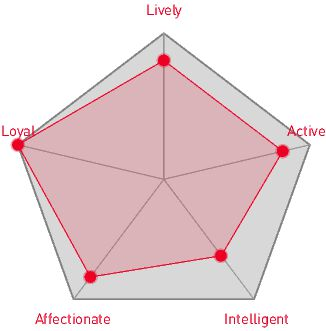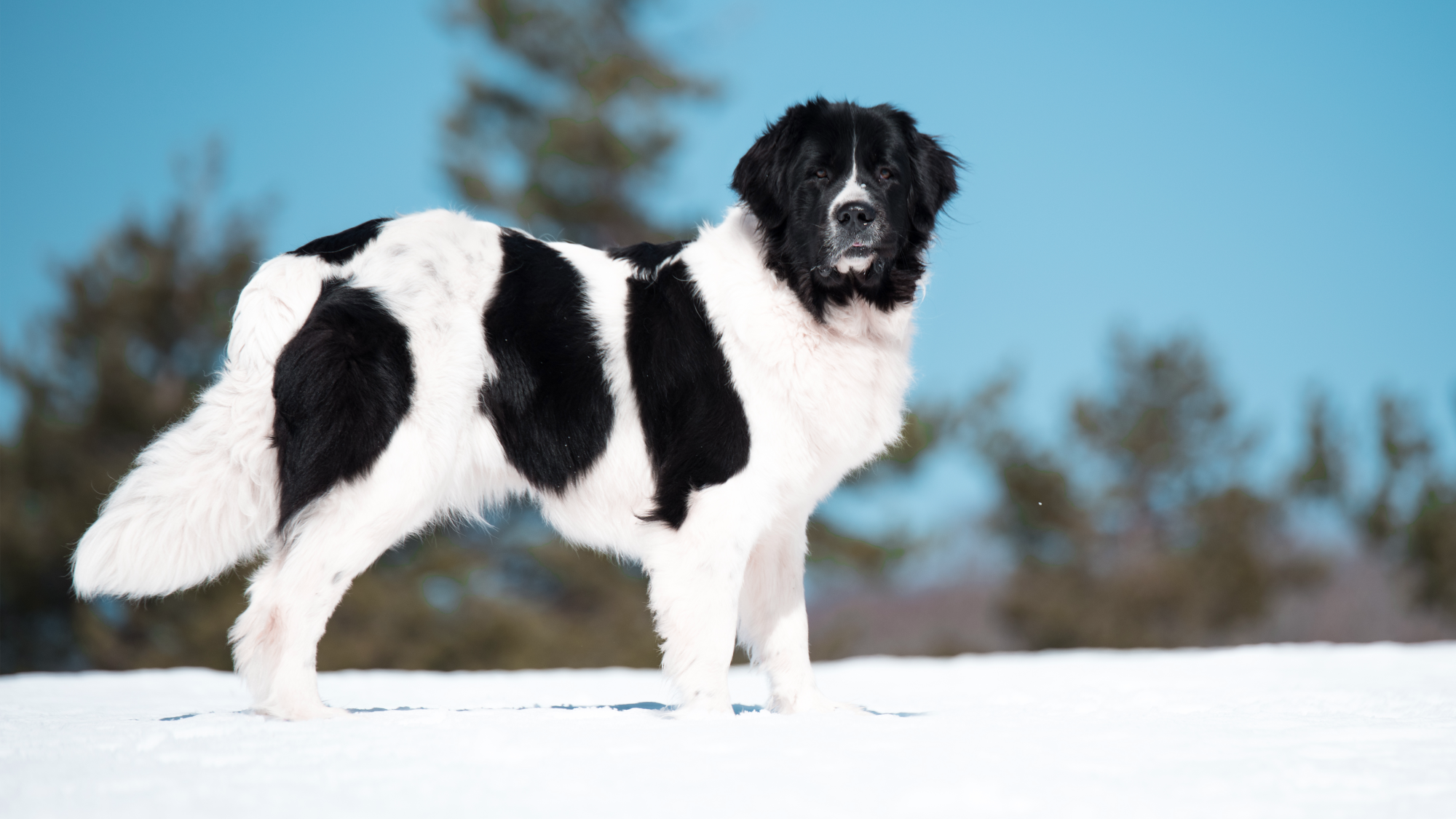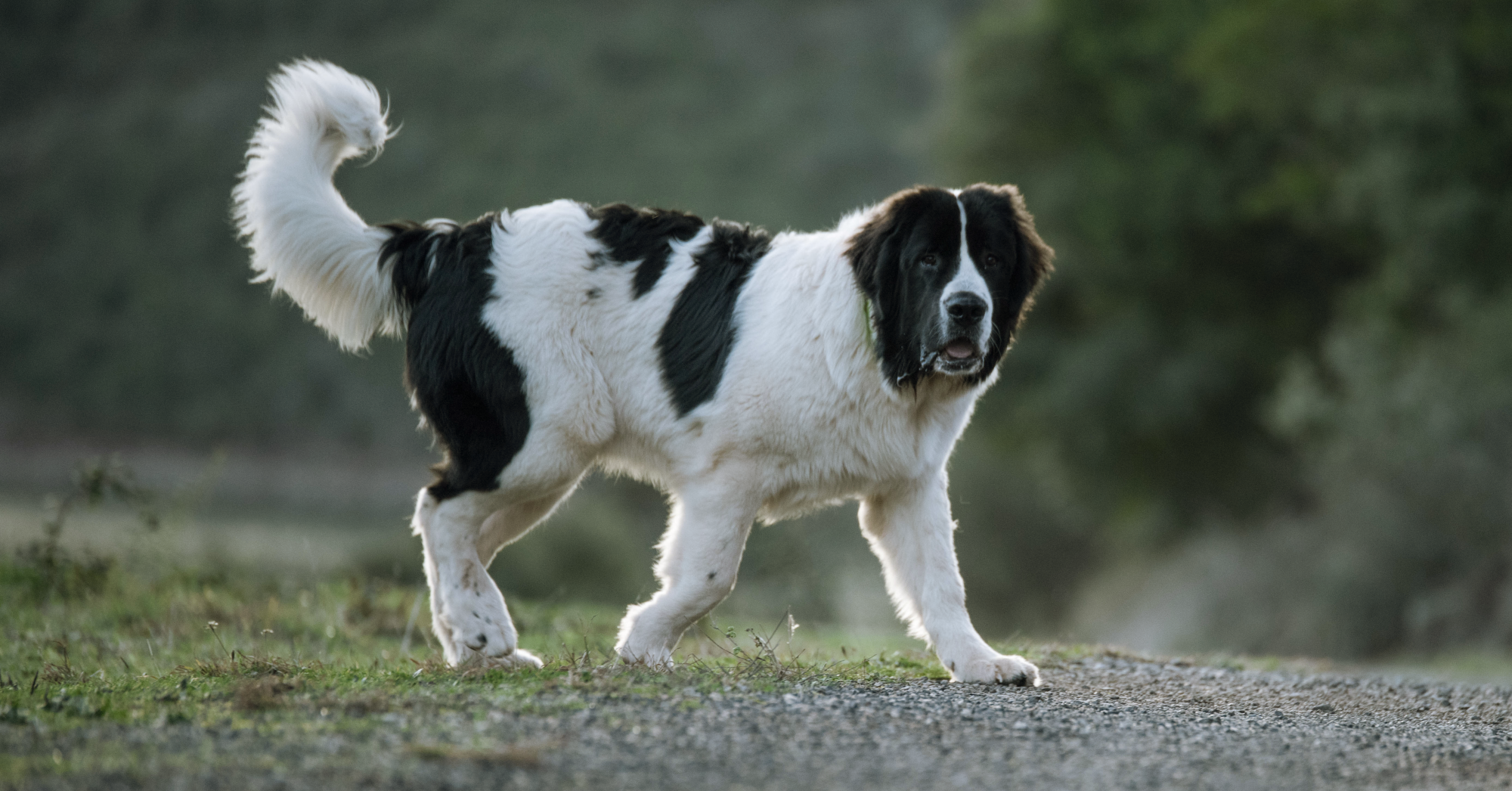
Let's talk Landseers
It’s hard to avoid calling the Landseer a gentle giant. They are a wonderful combination of capaciousness and tenderness, their hefty body housing a mild-mannered and serene dog but one that has family top of mind when it comes to their role in the domestic pack. The Landseer is content to hang around the house while humans get on with their day but also completely fine if alone. A watchdog they’re not but those who know the Landseer can vouch for the fact that this is no ordinary dog.Official name: Landseer
Other names: Landseer Newfoundland
Origins: Canada

| Drooling tendencies: |
|
Warm weather? | 
|
| Shedding level: |  |
Suited to apartment living? | |
| Physical activity needs (high, low, medium): | Low to moderate | Kid-friendly? |

|
| Compatibility with other pets: | 
|
Can stay alone? | 
|
We advise against leaving pets alone for long stretches.
Companionship can prevent emotional distress and destructive behaviour.
Speak to your veterinarian for recommendations.


| Baby age | Birth to 2 months |
| Puppy age | 2 to 8 months |
| Adult age | 8 months to 2 years |
| Mature age | 2 to 5 years |
| Senior age |
from 5 years |

1/7
Get to know the Landseer
All you need to know about the breed
The snowy climes of Canada have produced many breeds of dog, but among the most unique is the Landseer. The sister breed to the Newfoundland, the Landseer differs most by their colouration - exclusively black and white - a less-heavy head, a lighter undercoat, and longer legs. What they do share: a convivial, calm demeanour. The Landseer dog will be more than content to hang by your side all day. It’s often their preferred way to pass the time - that and swimming, which they’re used to from years bred assisting fishermen in the region.
A giant breed can mean a lot to handle, but the Landseer’s very docile manner makes them surprisingly easygoing, and short of their drool (which is not exorbitant), care for this dog is no more intensive than any other breed. The Landseer carries their large limbs well, with a lighter gait than might be expected of a dog this size. They’ll even function well in an apartment - preferably a larger one - as long as they’re exercised enough.
A true family dog, they do have protective instincts but that’s simply because they put family first. The Landseer will warm up to newcomers into the home soon enough. Show your Landseer as much respect as possible - that is an easy task with any canine - and it will pay off in spades once introductions are made.

2/7
2 facts about Landseers
1. Comes in two colours
The Landseer is often confused with their sister breed, the Newfoundland, but is distinguished by their solely black-and-white coat colour (in addition to head size, height, and different undercoat). It may be the reason why that smooth and fine fur has so often landed them in portraiture and paintings over the years.
2. The water’s fine
Large Canadian breeds like the Landseer breed were originally used by fishermen to help tow their nets out of the water, the dog’s immense bulk and strength proving the perfect vessel to do so. Today’s Landseer is still a water baby at heart and is always willing to dive right in, to lake, ocean, or pool, if given the chance.
History of the breed
The Landseer is one of the hidden gems of Newfoundland and Labrador, the province in Canada’s most northeasterly corner where they had been the favourite of fishermen who utilised their size and strength to bring fishing nets back to dry land.
European fishermen then followed suit, taking the breed back to the continent in the mid- to late-1700s where they were for a time considered the tallest dog in existence. After crossing these Newfoundland dogs with the Great Pyrenees dogs, the Landseer breed eventually came into their own.
It was the hugely popular 19th century British painter Edwin Landseer however who put the Landseer breed on the map, featuring the black-and-white coated canine in many of his paintings which gave rise to viewers referring to them as “the Landseer dog.”
The Landseer breed was recognised by the Fédération Cynologique Internationale in 1960.

4/7
From head to tail
Physical characteristics of Landseers
1. Ears
Medium-sized ears for a giant breed, set high, relaxed on head.
2. Body
Giant, robust body with longer legs, deep chest.
3. Coat
Long, straight, dense topcoat, softer undercoat, smooth and fine hair.

5/7
Things to look out for
From specific breed traits to a general health overview, here are some interesting facts about your Landseer

6/7
Caring for your Landseer
Grooming, training and exercise tips
The fine and fluffy coat of the Landseer is eye-catching but grooming is important. The breed will shed, especially during spring and fall when they moult - or shed - for a new coat to grow in. Brush them weekly, more so during moulting. Take care not to miss fringed fur behind the ears, along legs and under arms, too. As with all breeds, brush their teeth often and clean ears and eyes regularly. Trim nails routinely, important for large breeds whose even-keeled growth depends on a balanced footing. It’s easy to think larger breeds need large amounts of exercise but the Landseer needs only a daily stretch of their legs to keep fit, which will help their mental fitness as well. Landseers enjoy water, with their heritage as a fisherman’s assistant, so your Landseer dog will easily take to any aquatic body if given the chance. The Landseer breed’s easy-going temperament also means pleasant training sessions. Best to start when they are puppies in order to develop great behaviour, but exert a firm hand - never a harsh one - for optimal results.7/7
All about Landseers
This breed of dog is distinguished for their fluffy black and white hair and notable noble expression. As a giant breed, the Landseer is hard to miss but leaves an impression with both their serene outlook and easy gait. They are a very freewheeling breed, for sure.
One of the hallmarks of the Landseer dog is their well-rounded nature. They are noted for their very calm demeanour as well as their bravery - such is their devotion to the pack they call their family. Protecting the home is just one of their skill sets in the list of the Landseer’s top-notch characteristics.
translations.feature.breeds.otherbreeds
Read more on this topic

How your dog's nutrition needs change with age

How to adopt a dog

Things to consider before getting a dog
Sources
1 - Veterinary Centers of America https://vcahospitals.com/
2 - Royal Canin Dog Encyclopaedia. Ed 2010 and 2020
3 - Banfield Pet Hospital https://www.banfield.com/
4 - Royal Canin BHN Product Book
5 - American Kennel Club https://www.akc.org/


